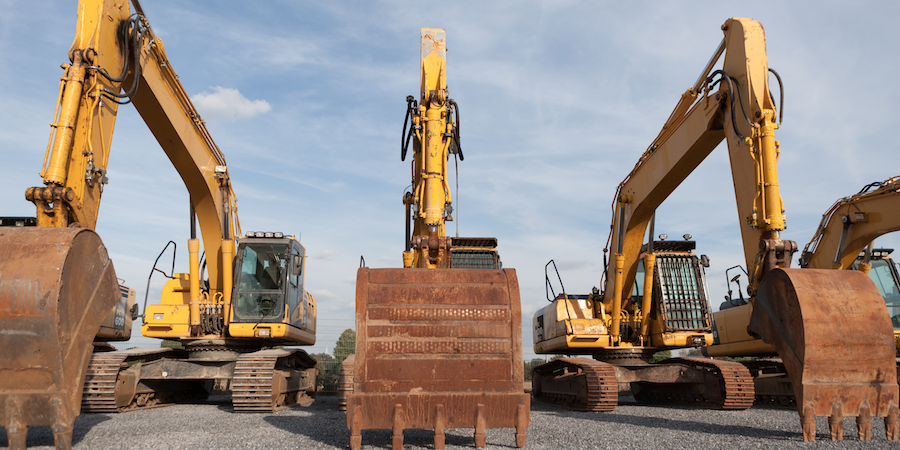Recently, I described the reasoning behind the creation of Construction Career Collaborative (C3) and attributed it to the fact that the construction industry has an unsustainable workforce. In that essay, I listed five different but related reasons how we got “into this mess.” Among those are a misclassification of craft workers as subcontractors, a movement away from craft training and safety training, a de emphasis of vocational education in our high schools in an effort to prepare all students for college, a perception among young people that the construction industry is dirty and unsafe, and a flood of undocumented workers who work in the shadows with no recourse to address wage abuse resulting in downward pressure on wages. All of these reasons contribute to why young people are not attracted to an industry that formerly provided an excellent path to a middle class living.So one might ask, “What is the solution to this problem?” For starters, the commercial construction industry must cease business practices that make it unattractive to prospective workforce candidates such as misclassification of its workers as contract employees. To be blunt, who wants to work in an industry that does not pay matching social security taxes, federal and state unemployment taxes, provide workers compensation insurance, or any form of employee benefits?
Reshaping the Construction Industry
This week, I had the pleasure of speaking to members of the Austin Independent School District Board of Trustees about the Construction Career Collaborative (C3). As a journalist who's covered the program’s development in Houston, I felt the board should at least know about it as they consider how to improve the lives of the workers on AISD construction projects.
June 04, 2014
This week of June 2-6 has been designated National Fall Prevention Safety Stand-Down week by OSHA to help prevent injuries and deaths due to falls on the job.According to the Department of Labor blog site and OSHA statistics, there were 806 lives lost in construction in 2012 and 300 of them were due to falls on the job.The current plan is for as many as 25,000 businesses to host “stand-downs” and educational events for over 1 million workers. These events and the safety standards taught in the “stand-downs” will definitely save workers lives across the entire country. During the “stand-down” on the construction sites, the companies will describe fall hazards and show ways to prevent those reportable falls on the job sites.Please urge your companies and your team members to participate in this important OSHA event. It could save your life.
June 03, 2014
More metros add jobs in April; construction costs stay mild in first quarter, Means saysEditor’s note: Construction Citizen is proud to partner with AGC America to bring you AGC Chief Economist Ken Simonson's Data DIGest. Check back each week to get Ken's expert analysis of what's happening in our industry.From April 2013 to April 2014 construction employment increased in 220 out of 339 metropolitan areas for which the Bureau of Labor Statistics reports construction data, declined in 70 and was unchanged in 49, according to an analysis that AGC released last Tuesday. (The agency combines mining and logging with construction in most metros to avoid disclosing data for industries with few firms. Because metro data is not seasonally adjusted, comparisons with months other than April are not meaningful.) Three divisions of larger metros added the most jobs over the year: Los Angeles-Long Beach-Glendale (11,100 construction jobs, 10%), followed by Dallas-Plano-Irving (9,500 combined jobs, 9%) and Santa Ana-Anaheim-Irvine, Calif. (8,500 construction jobs, 11%).
June 02, 2014
Once when I was a kid, my parents had a truckload of dirt dumped onto our driveway. Their intent, and the eventual result, was that the dirt was to be used to level the low spots in our lawn. However, the immediate response to that glorious pile of dirt was that for a few weeks it became the greatest kid hangout on our block. The neighborhood kids brought over their toy cars and trucks (both Matchbox and Tonka), and together we built the most amazing “city” complete with roads, tunnels, and bridges.Now lucky kids and their parents will be able to drive and to dig with actual construction equipment at the first construction-themed amusement park to open in the United States. Diggerland USA is scheduled to open on Saturday, June 14 in the township of West Berlin, New Jersey, just a short drive from Philadelphia, Pennsylvania.
May 30, 2014
Summer has arrived, and enthusiastic high school and college students are looking for summer internships. Internships are not a problem if you are paying interns at least minimum wage, and are paying overtime hours (any hours worked over 40 in a work week) at one and one-half times their regular wage rate.If you are considering unpaid internships, however, you may be exposing your company to a lawsuit.Under the Fair Labor Standards Act, if you allow a person to perform services for you, in most instances that person must be paid and will be subject to minimum wage and overtime requirements. There is a narrow exception for true unpaid internships, which must meet the following six criteria:
May 29, 2014
The future of the next phase of construction for the proposed headquarters of the Department of Homeland Security in Washington, DC has once again become a political football, according to a recent article in the Washington Post. The project originally proposed after the 9/11 terrorist attacks was intended to consolidate the departments that are now housed in over 50 buildings around the capitol area into one location.
May 28, 2014
South, West lead in population growth as cities outpace suburbs; starts rise, MHC saysEditor’s note: Construction Citizen is proud to partner with AGC America to bring you AGC Chief Economist Ken Simonson's Data DIGest. Check back each week to get Ken's expert analysis of what's happening in our industry.“The South and West dominated the list of fastest-growing municipalities between 2012 and 2013, claiming all of the top 15, seven of which were in Texas,” the Census Bureau reported last Thursday. “San Marcos, Cedar Park and Georgetown—each near Austin—ranked among the 10 fastest-growing cities with populations of 50,000 or more during the year ending July 1, 2013. San Marcos was number one in percent growth [8.0%] for the second consecutive year, with Austin itself gaining more people (nearly 21,000) than any [other] city with fewer than 1 million residents.” Population growth is a major driver of residential construction and contributes to demand for many other types, particularly if growth occurs in new areas or outer parts of metro areas. The Wall Street Journal reported last Thursday, “just 18 of America’s 51 metropolitan areas with more than 1 million people had cities growing faster than their suburbs last year, down from 25 in 2012, according to an analysis of census data by William H. Frey,
May 27, 2014
Memorial Day prompts reflection and appropriately so. We must never forget all of those who gave their lives for our freedom, whether in the two World Wars, Korea, Vietnam, the Gulf or in the fighting that continues today. To paraphrase, Winston Churchill, “Never has so much been owed by so many to so few.”This day also prompts homage to those who returned, those heroes who then turned their talents and patriotism to making this country the great nation that it is. One group that deserves our continuous study and emulation is the veterans of World War II, that special group of men and women heralded in Tom Brokaw’s marvelous book, The Greatest Generation. Brokaw wrote this book as a tribute to his father and his buddies, all World War II vets. It is a compelling story, which every American can benefit from reading. He eloquently conveys how this group came back, and although they were owed so much, they never wanted to do anything but continue to serve and give in their companies, their communities and their country. The leaders, both officers and enlisted, went on to start and head companies, to build America into a great industrial economy, while at the same time ensuring that the men and women who had served and supported them in wartime had decent jobs in peacetime, jobs that could allow them to feed their families and realize the American Dream.
May 26, 2014
Earlier this spring I attended an open house at the new Performance Verification Center in La Porte, Texas. The Center has been created by ABC Houston and the Construction and Maintenance Education Foundation (CMEF) to provide hands-on evaluation of craft performance skills by certified Performance Evaluators as part of the accreditation process of students and trainees.Glen O’Mary, Director of Education for the ABC/CMEF Performance Verification Center, joined the staff this February, but has been working in the construction and maintenance industry for 14 years, so he knows many of the people associated with this organization. He is excited to be a part of CMEF, which you can hear in the following 3-minute video interview. He says,“We need a trained and competent workforce. Everybody here is willing to get their hands dirty – literally – to support the cause and do this. We are providing a future for families and giving somebody a chance at a life that they may not have had an opportunity to have in the past. Why I am so close to this is it is helping people change their lives – to become something better. That’s why my heart is in it so much.”
May 23, 2014



.jpeg?itok=6uFZXEBH)





.jpeg?itok=4Vi_1nJG)






























